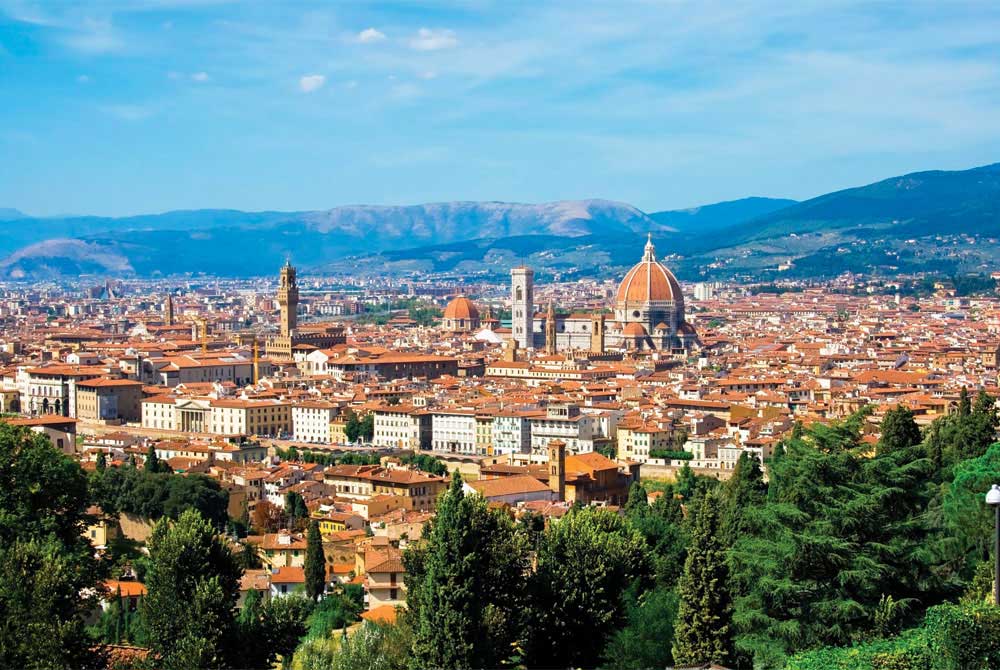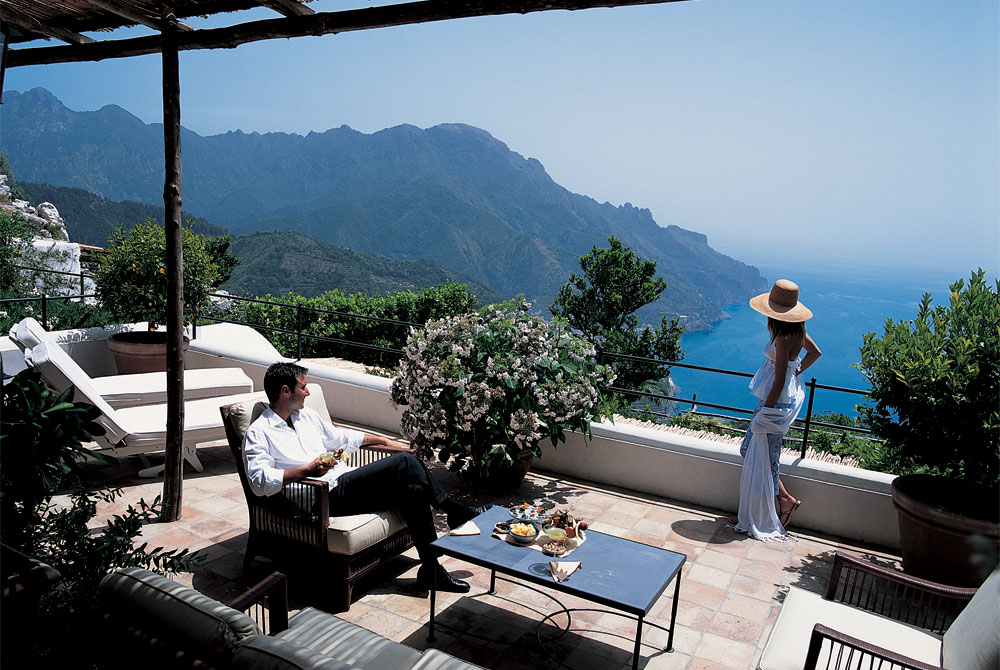Let us take you on a tour of one of the most beautiful and art-rich cities in the world, Florence Italy. The close proximity to the Chianti wine region, unsurpassed sculpture work and the wealth of opportunity for sun-filled lengthy banquets makes the Italian city a must have stamp in your passport.
The French novelist Stendhal suffered an attack of dizziness and nausea on his first visit to Florence Italy; blamed on exposure to too much beauty. Since then enough visitors have been struck down similarly for the condition to be given a name: Stendhal’s Syndrome. And with a plethora of endless art works, including countless works from the likes of Leonardo da Vinci, Botticelli, Michelangelo and Raphael, mouth-watering restaurants and captivating architecture the syndrome is hardly surprising.
Beautiful sights
Central Florence is dominated by the polychrome- fronted cathedral of Santa Maria del Fiore, known as the Duomo in honour of its red brick dome, one of the world’s greatest feats of engineering. The 375ft dome, which spans some 140 feet and is constructed from four million bricks, took just 16 years to build and remains the largest masonry dome in the world. The cathedral’s bell tower, the Campanile, designed by Giotto in 1334 and inlaid with the same pink, white and green marble as the façade of the church, is another hugely impressive structure. You can go up both the Duomo and the Campanile if you’re up to the climb—463 and 414 steps respectively—the spectacular views are more than worth the effort. The queues for the Uffizi Gallery stretch around the block, a good indication of the importance of what is inside, one of the world’s greatest picture galleries. The medieval Ponte Vecchio, lined with jewellers’ shops, is such an evocative symbol of Florence that even Hitler is alleged to have recognised its value. During Nazi bombing in 1944, every other bridge along the river was destroyed, but the Ponte Vecchio survived, and is rumoured to have been spared at Hitler’s command. The River Arno has been crossed at this, its narrowest point, since Roman times, but the present bridge dates from 1345, when it was rebuilt after the previous wooden structure was washed away in a flood. The butchers and fishmongers who were the first, less than fragrant, occupants of the bridge’s stores were turfed out by Duke Ferdinando I in 1593, and replaced by goldsmiths and silversmiths. Today tourists mob the bridge most of the time. It is marginally less busy (and much more romantic) at night when the shops close, and the reflections of the streetlights shimmer in the waters of the Arno.
The medieval church of Santa Croce is one of Florence’s greatest buildings. Its star attraction is Giotto’s frescoes, which entirely cover the walls of the Bardi and Peruzzi chapels beside the altar, but it is also the mausoleum of some of Florence’s most famous men: the tombs of Michelangelo, Ghiberti, Galileo and Machiavelli are all here.
Michelangelo
Long said to encapsulate the essence of masculine beauty, Michelangelo’s David is without doubt the most famous artwork in Florence. Carved between 1501 and 1504 from a single block of marble, it is regarded as Michelangelo’s masterpiece in sculpture, and was finished when the artist was just 29 years old. It shows the biblical hero at the point just before his battle with Goliath, and was intended to signify the strength and resolve of the Florentine state. It is best to book ahead to get tickets to the museum, but if you’re not fussed about seeing the original, there is a replica in the central Piazza della Signoria, and another at the top of the Michelangelo Steps, on the south side of the river.
Tune in
Florence Italy has a thriving classical music calendar. Between September and April, Amici della Musica (Friends of Music) hosts a series of concerts at the richly decorated Teatro della Pergola, featuring composers from Vivaldi to Debussy and, throughout the summer months, outdoor concerts of chamber music take place in locations throughout the city. Look out particularly for the Opera Festival of Tuscany, which is based in the Boboli Gardens. The 2008 season featured an eminently accessible selection including The Barber of Seville, La Traviata, La Bohème and Carmina Burana.
The city is also a stopping point for major contemporary stars on their European tours. Florence’s largest theatres, the recently revamped Teatro Verdi and the Teatro del Maggio (home to the Maggio Musicale Fiorentino festival) tend to be the host theatres when the big hitters visit the city.
1966 Flood
In November of 1966, Florence was devastated by an unexpected and catastrophic flood. Overnight the Arno broke its banks, coming up and over the Ponte Vecchio, deluging the city’s main piazze, and filling the streets with mud and debris. Twenty-nine people lost their lives, 6,000 shops were put out of business and over 10,000 people were made homeless. Some 14,000 pieces of priceless artworks, and as many as four million books and manuscripts, were lost and damaged. Volunteers from all over Italy, who became known as the ‘mud angels’, came to salvage as much as possible (including Ghiberti’s famous ‘Doors of Paradise’, which had been torn from their hinges). Restoration work continues still. Today you’ll see many buildings with plaques to mark the level of the water on Florence’s worst day (over 22ft in the area around Santa Croce).
The greenery of Boboli
Florence lacks greenery somewhat, which makes the Boboli Gardens, just across the Arno from the Uffizi, even more of a joy. The 111-acre gardens were laid out by Cosimo de Médici in the mid- sixteenth century and today constitute a kind of open-air sculpture museum, with Roman antiquities mixed with statues from the sixteenth and seventeenth centuries. The gardens include an impressive amphitheatre built for the Médici to stage pageants and mock wars, as well as the vast and bizarre Grotta del Buontalenti, with its fake stalagmites and stalactites. The gardens belong to the Palazzo Pitti, which houses some of Florence’s greatest artworks in its eight museums.
Dinner time!
Many of the city’s restaurants are geared towards tourists, but if you find an authentic Tuscan osteria or trattoria, you are in for a real treat. Italy is the birthplace of the Slow Food movement, which prioritises local produce cooked simply and well, and it is worth seeking out a restaurant with the Slow Food logo in its window (or visit www.slowfood.com). The classic Florentine dish is bistecca alla Fiorentina—an enormous hunk of T-bone steak, served rare with little more than a green salad or a plate of fagioli (beans). A traditional Italian meal can last for hours: beginning with antipasti of cold meats, continuing through a course of pasta or risotto (primo), followed by a meat course (secondo), served with a side order of vegetables (contorno) and finally dolce, the dessert course, which will often be fruit with a local cheese, such as pecorino. Coffee or a digestif rounds off the meal (and remember never to order a cappuccino after 11am; the Italians consider it barbaric). Florence’s best known and regarded restaurant is Cibrèo, near Santa Croce, where chef Fabio Picchi has been presenting his updated take on traditional Tuscan home cooking for over 20 years, or try its sister restaurant Cibreino for prices half those of the main restaurant.



